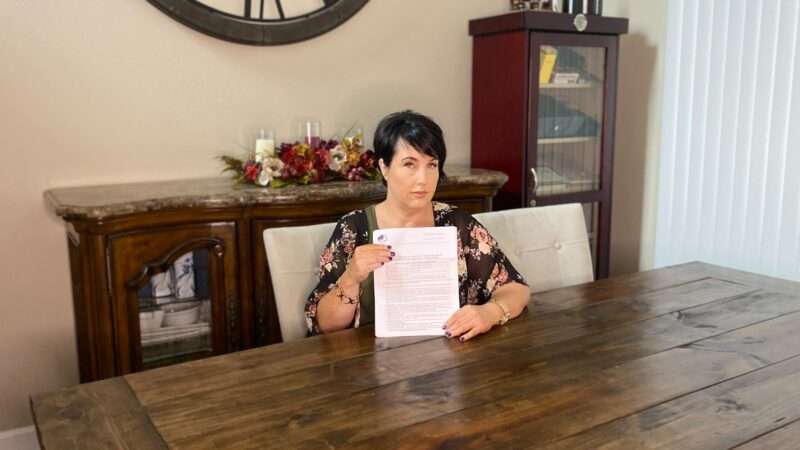Before the current pandemic, I had never read the Massachusetts Supreme Judicial Court’s opinion in Commonwealth v. Jacobson. That case observed, “[i]f a person should deem it important that vaccination should not be performed in his case, and the authorities should think otherwise, it is not in their power to vaccinate him by force, and the worst that could happen to him under the statute would be the payment of the penalty of $5.” I was struck by that sentence.
I had long assumed that Jacobson upheld the state’s power to forcibly vaccinate someone. For example, states routinely force people into quarantines. Why couldn’t states take the antecedent step of inoculating people, even against their wishes, to avoid the need to quarantine? In Buck v. Bell, Justice Holmes analogized the forcible sterilization of Carrie Buck to the forcible vaccination of Henning Jacobson. But my assumption was wrong. And I suspect I am not alone. Most lawyers never actually read Jacobson, let alone the lower court opinion. The case does not appear in any casebook I have reviewed. And, I doubt most judges who have cited Jacobson in the past 6 months have bothered to read both opinions. Rather, I suspect most lawyers and judges are familiar with Buck v. Bell, and rely on Holmes’s characterization.
This assumption gives rise to an important question: What exactly is a vaccine mandate?In the concept of a vaccination, there are two approaches to understand a “mandate.” The first approach reflects the law at issue in Jacobson. Those who refuse to be vaccinated must pay a nominal fine. Five dollars is roughly $150 in present-day value. I think it was significant there was no jail time associated with this offense. Throwing people in jail for refusing to be vaccinated would have presented a harder case. The second approach reflects a different type of law: people who refuse to be vaccinated will be forcibly vaccinated by the state. That is, the state would forcibly restrain someone and inject them with the vaccine. That law, I suspect, would have been declared unconstitutional by the Lochner Court. (Lochner and Jacobson were decided two months apart.)
In Buck v. Bell, Justice Holmes had to rely on the second conception of the mandate to uphold Virginia’s sterilization act. Carrie Buck was not given the option to pay a nominal fine in exchange for keeping her reproductive functions. Nor was Buck given the option to serve a jail sentence for refusing to submit to the surgery. She had one option: submit to the procedure. Holmes needed some precedent to support this outcome. And he looked to Jacobson. Holmes concluded that “the principle that sustains compulsory vaccination is broad enough to cover cutting the Fallopian tubes.” But Jacobson did not actually sustain “compulsory vaccination.”
I’m not sure that any state has ever relied on the second approach to achieve “compulsory vaccination.” Unvaccinated students may be denied access to public education. But the state will not jab unvaccinated students in the arm with a syringe at the schoolhouse gates. Indeed, laws that are routinely called mandates are not actually mandates. If a person on a bicycle refuses to wear a helmet, the government will issue a citation, not force the person to wear a helmet. If a person refuses to wear a seat belt, the police will ticket, not click it. A person who skips jury duty may be served with a bench warrant, but he will not be dragged into the jury box. Our society abjures actual requirements for people to take specific actions. The state has the power to compel people to take certain actions through two primary sticks: fines and/or incarceration. And the Due Process Clause of the Fourteenth Amendment does not prevent the government from imposing such punishments–even though people are being deprived of their “property” (money) or “liberty” (freedom to leave prison).
Now back to COVID. Some states may wish to enact laws that resemble the law at issue in Jacobson: people who refuse to take a COVID-19 vaccine will have to pay a nominal fine. Let’s put aside state RFRAs or the Free Exercise Clause for a moment. Under Jacobson, this sort of mandate would not run afoul of the Due Process Clause of the Fourteenth Amendment.
What if other states wish to get more aggressive? Perhaps a state wants to enact a true compulsory vaccination regime. Maybe the state wishes to go door-to-door, and inject people with the vaccine. And those people who forcibly resist the vaccine will be restrained, strapped to a gurney, and injection. (I imagine China would enforce such a regime). Would Jacobson support such a regime of compulsory vaccination? No. Here, the government would have to rely on Buck v. Bell. That is the leading precedent that allows the government to perform medical procedures to advance the public good. Good luck citing Buck v. Bell in court.
I think it is a tougher question whether the state can hold a person in prison indefinitely until they agree to receive a vaccine. Indeed, Buck v. Bell held that sterilization was a lesser intrusion on freedom than permanent incarceration. (Every year I ask my students whether which punishment was worse–they divide in unexpected ways.) Granted, the COVID-19 pandemic will (hopefully) draw to a close sooner rather than later. So I do not think indefinite detention would be an option. But imagine there is another virus for which herd immunity requires 100% inoculation rate, annually. Could the state simply imprison those who refuse to be vaccinated indefinitely?
At this point, I’m some of you are screaming what about OBAMACARE!? So far, I have only discussed state mandates. A very different analysis pertains to a federal mandate. Section 5000A(a) of the Affordable Care Act imposed a requirement to maintain insurance. And Section 5000B(b) imposed a penalty on those who fail to maintain insurance. The Obama Administration argued that there was not a mandate. Rather, these two provisions worked together to offer people a choice: purchase insurance of pay a tax-penalty. Indeed, the law that the Obama Administration described resembled the statute in Jacobson. (I made this point yesterday). If the Obama Administration’s reading of Section 5000A as a whole is correct, then that provision was constitutional in 2010.
Now I think NFIB rejected that reading. I won’t rehash that argument here. But let’s assume I am right for a moment. If I’m right that NFIB imposed an actual requirement to purchase insurance, then we have moved beyond the ambit of Jacobson. Certainly, we are not anywhere near close to a Buck v. Bell style mandate. But if Section 5000A “commands individuals to purchase insurance,” people no longer have a choice.
Recall that there were Due Process Clause challenges to the ACA’s mandate. And those challenges were uniformly rejected. Why? Because a purchase mandate to buy insurance simply required people to part with some amount of money. That deprivation of property, by itself, was not enough to trigger a violation of the Fourteenth Amendment. Indeed, a mandate to purchase broccoli would likewise be valid under the Fourteenth Amendment. A mandate to eat broccoli would be very different, and would likely run afoul of the Due Process Clause.
But the question in NFIB did not concern the Due Process Clause. The question presented considered whether Congress had the powers to impose a purchase mandate under its Commerce and Necessary and Proper Powers. Part III.A of NFIB found that Congress lacked such a power.
Today, could Congress give people a “choice”: get vaccinated against COVID-19 or pay a nominal penalty? I think such a federal law would be valid under the Due Process Clause, in light of Jacobson. But Congress would not have the power to enact this law under its Commerce and Necessary and Proper Clause authorities.
At this point, some astute reader may ask about California v. Texas: Josh, how can the post-2017 ACA impose a mandate if the penalty is $0? Part III-A of NFIB considered Section 5000A(a) standing by itself. The plaintiffs never challenged Section 5000(b) as unconstitutional. And, the Court’s analysis in Part III-A did not consider the penalty; it focuses entirely on the mandate in Section 5000A(a). That analysis applies in the same fashion to the pre-2017 ACA as it does to the post-2017 ACA. The astute reader may now asks a different question: Josh, how can anyone be injured by the penalty-less mandate? In my view, the injury in fact from NFIB was premised on the mandate, standing by itself. And, that injury in fact in 2020 is more severe than the injury faced in 2012. The dialogue continues: Josh, how can the Court issue a remedy to enjoin the enforcement of a penalty-less mandate. That question concerns the other two prongs of the standing inquiry: redressability and traceability. The Cato amicus brief carefully separated these prongs, which are, regrettably, often merged. First, we discussed injury in fact. Later, we considered redressability and traceability in the context of severability–what Steve Sachs called the “bank shot” theory of standing. I think the injury in fact argument is on solid ground. But I freely concede that the latter two elements are much tougher.
I’ve given the issue of mandates some thought. The ideas in this post have been floating in my head for some time. I’m grateful to have the opportunity to expound on them here. But, above all else, the Supreme Court needs to clear up the relevance of Jacobson. It may be one of the most misunderstood cases in the modern era.
from Latest – Reason.com https://ift.tt/373OyMp
via IFTTT

